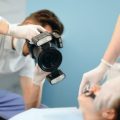Introduction: The Shifting Landscape of Beauty in the UK
Once considered a closely guarded secret, cosmetic treatments—often playfully referred to as ‘tweakments’—have undergone a remarkable transformation within British society. Not so long ago, conversations about Botox, fillers, or non-surgical enhancements were confined to hushed tones and private circles. Today, however, the UK is witnessing a significant cultural shift. Increasingly, people from all walks of life are embracing tweakments as an everyday aspect of self-care and personal grooming. This evolution reflects broader changes in societal attitudes towards beauty, self-expression, and ageing. No longer shackled by taboo or embarrassment, Britons are engaging more openly with cosmetic interventions, viewing them less as acts of vanity and more as empowering choices. This article explores the journey of tweakments in the UK—from their origins on the fringes of acceptability to their current place at the heart of mainstream culture—shedding light on what this means for modern British identity and values.
2. What Are ‘Tweakments’?
‘Tweakments’ is a term that has steadily embedded itself within the British beauty lexicon, reflecting subtle shifts in how aesthetic enhancements are perceived and discussed. At its core, a ‘tweakment’ refers to minimally invasive cosmetic procedures designed to subtly enhance or refresh one’s appearance without radically altering natural features. This stands in contrast to traditional plastic surgery, which often involves significant downtime, surgical intervention, and dramatic transformations.
Defining ‘Tweakments’
Tweakments typically include treatments such as Botox injections, dermal fillers, skin boosters, chemical peels, and laser therapies. These procedures are usually performed in clinics rather than hospitals, require little to no recovery time, and offer results that are noticeable yet understated. The essence of tweakments lies in their ability to provide a refreshed look while preserving the individual’s unique characteristics—a concept that particularly resonates with the understated elegance valued in British culture.
Comparison Table: Tweakments vs. Invasive Procedures
| Aspect | Tweakments | Invasive Procedures |
|---|---|---|
| Type of Intervention | Non-surgical / Minimally invasive | Surgical / Highly invasive |
| Examples | Botox, Fillers, Peels | Facelift, Rhinoplasty |
| Downtime | Minimal or none | Several days to weeks |
| Results | Subtle enhancement | Dramatic transformation |
| Cultural Perception in the UK | Discreet & socially acceptable | Often seen as extreme or taboo |
The Unique Position of Tweakments in British Beauty Culture
The popularity of tweakments aligns closely with British sensibilities—prioritising discretion over ostentation and favouring small improvements over drastic changes. In the UK, there is often a reluctance to openly discuss cosmetic work; however, tweakments have carved out a space where subtle enhancement can be pursued without fear of social stigma. They offer an avenue for self-care that feels approachable and less fraught with judgement compared to more dramatic interventions. This nuanced approach is redefining modern British beauty standards, making tweakments an integral part of everyday conversations about self-presentation and confidence.
![]()
3. Cultural Attitudes: From Stigma to Acceptance
In recent years, the UK has witnessed a marked shift in cultural attitudes towards non-surgical enhancements, or tweakments. Historically, any form of cosmetic intervention was shrouded in stigma—often dismissed as vain or artificial, and largely whispered about behind closed doors. This perception was particularly strong among older generations, who associated such procedures with celebrity excess or Hollywood superficiality. However, as tweakments like Botox, dermal fillers, and skin boosters have become more accessible and less invasive, they have begun to shed their taboo status.
Today, the normalisation of tweakments is evident across British society. Younger generations, especially Millennials and Gen Z, tend to view these procedures as a routine part of self-care rather than something to be ashamed of. Social media has played a significant role here; influencers and reality TV personalities openly share their experiences with tweakments, making the conversation more transparent and relatable. In local communities across the UK—from London high streets to smaller market towns—clinics offering non-surgical enhancements are no longer hidden away but proudly advertised. This increased visibility signals an acceptance that would have seemed unlikely even a decade ago.
Despite this growing mainstream appeal, generational differences remain pronounced. While younger people might see tweakments as akin to getting a haircut or manicure, many older Britons still approach them with caution or scepticism. For some, concerns linger around safety, authenticity, and the pressure to conform to unrealistic beauty standards. Yet even among these groups, there is a gradual softening of attitudes. It is now more common for people in their 40s and 50s to consider subtle enhancements, often motivated by a desire for confidence rather than transformation.
This evolution in cultural attitudes reflects broader changes in how appearance and personal choice are understood in modern UK culture. Where once there was judgement or secrecy, there is now a greater emphasis on agency and openness—a recognition that individuals should feel empowered to make decisions about their own bodies without fear of ridicule or exclusion.
4. Influence of Media and British Celebrities
In recent years, the British media landscape has played a significant role in shaping public perceptions of tweakments. Coverage in national newspapers, lifestyle magazines, and even on morning talk shows has shifted from sensationalism to informed discussion. This has provided more balanced information about procedures such as Botox, fillers, and non-surgical facelifts, helping to demystify and destigmatise them for a wider audience.
British celebrities and influencers have also contributed greatly to this cultural shift. Instead of hiding their choices, many now speak openly about their experiences with tweakments, often sharing before-and-after stories or discussing recovery processes on social media. This candidness encourages open conversation among the public, reducing the secrecy that once surrounded cosmetic enhancements.
Key Influencers and Their Impact
| Public Figure | Platform | Contribution |
|---|---|---|
| Rylan Clark-Neal | TV & Instagram | Openly discussed dental veneers and facial tweaks, normalising cosmetic choices for men. |
| Katie Price | Tabloid Press & Reality TV | Brought non-surgical treatments into mainstream discourse by being upfront about her procedures. |
| Maya Jama | Social Media & Interviews | Tackled stigma by engaging with followers about beauty standards and self-confidence. |
| Dr Esho (Esho Clinic) | TV (E4’s Body Fixers) & Instagram | Educated the public on safe practices and realistic outcomes for tweakments. |
The Role of British Sensibility
The uniquely British approach to discussing tweakments is defined by humour, understatement, and pragmatism. While there is still a preference for “subtle” enhancements—what some refer to as the “London look”—the conversation is increasingly honest. Programmes like “Love Island” have further fuelled this shift by showcasing young people who are open about their cosmetic journeys without fear of judgement.
Cultural Destigmatisation Through Media Narratives
The intersection of media narratives and celebrity endorsements has made tweakments seem less intimidating and more accessible. Articles in The Guardian or features on BBC Radio 1 often focus on the psychological motivations behind tweakments, rather than just aesthetics. This nuanced coverage helps readers relate to the reasons behind these choices, fostering empathy instead of criticism.
In summary, UK-based media outlets and high-profile figures continue to play a pivotal role in bringing tweakments from taboo into the mainstream. Their influence is instrumental in challenging stereotypes and promoting responsible attitudes towards cosmetic enhancements within British society.
5. Societal Factors: Accessibility and Affordability
One of the most significant reasons behind the surge in tweakments across the UK is their increased accessibility and affordability. Over the past decade, these non-surgical cosmetic procedures have shifted from being the reserve of celebrities and affluent individuals to becoming available on the high street and even at local clinics. The expansion of qualified practitioners offering tweakments has played a critical role here, making it easier than ever for ordinary people to book appointments without lengthy waiting lists or travelling far from home.
Affordability is another key driver. Where once treatments like Botox or dermal fillers were seen as luxury expenses, they are now often competitively priced, with many clinics advertising introductory offers or payment plans. This financial accessibility means that a broader demographic, including younger adults and working professionals, can consider subtle enhancements part of their regular self-care routine rather than an unattainable indulgence.
The influence of social trends cannot be understated either. The UK’s embrace of tweakments mirrors a wider societal shift towards personal wellness and self-improvement. Social media platforms, celebrity endorsements, and reality television have all helped normalise these procedures, transforming them into an accepted—if not expected—part of maintaining one’s appearance. Increasingly, people see tweakments not as drastic changes but as minor adjustments to boost confidence and keep up with evolving beauty standards.
Ultimately, the combination of wider access, reasonable pricing structures, and shifting cultural attitudes has enabled tweakments to move firmly into the mainstream of UK culture. What was once taboo is now discussed openly amongst friends, with many considering these treatments as routine as getting a haircut or visiting a spa.
6. Ethics, Regulation, and Public Health Concerns
As tweakments become increasingly commonplace across the UK, ethical considerations and regulatory frameworks have been thrust into the spotlight. The rapid uptake of non-surgical aesthetic procedures has outpaced traditional oversight, leading to a lively national debate about patient safety, informed consent, and the responsibilities of practitioners. Unlike some countries where cosmetic interventions are tightly regulated, the UK context is defined by a patchwork of standards and voluntary registers, leaving room for ambiguity and potential risk.
Recent high-profile incidents involving unqualified providers and adverse outcomes have galvanised calls for more robust regulation. The government has responded with proposals such as licensing schemes for practitioners offering injectables, yet critics argue these measures do not go far enough. There is also the unique challenge of social media-driven demand: platforms often advertise tweakments directly to young audiences without clear information about risks or aftercare.
The British Association of Aesthetic Plastic Surgeons (BAAPS) and other professional bodies advocate for clearer guidelines around advertising, practitioner qualifications, and aftercare standards. Meanwhile, public health officials raise concerns about the long-term psychological impacts on vulnerable groups, particularly younger people exposed to unrealistic beauty ideals. Ethically, questions persist about how far practitioners should go in providing tweakments requested by clients who may be influenced by fleeting trends or social pressures.
Ultimately, the ongoing debates reflect broader UK values of fairness, transparency, and safeguarding public wellbeing. As tweakments transition from taboo to mainstream, finding a balance between personal autonomy and societal responsibility remains at the heart of the discussion.
7. Conclusion: Tweakments and the Future of British Beauty Ideals
Tweakments have journeyed from whispered secrets to everyday conversation, fundamentally shifting how beauty is defined and pursued in the UK. Where once a stiff upper lip dictated that aesthetic interventions be kept quiet, today’s openness signals a more inclusive and flexible approach to self-presentation. The mainstreaming of tweakments is not just about smoother skin or plumper lips; it is about giving individuals agency over their appearance while challenging traditional notions of ageing, gender, and what it means to look “British.”
This cultural shift raises important questions for the future. As tweakments become woven into daily routines, they blur the lines between natural and enhanced beauty. This redefinition encourages people to express themselves on their own terms, whether through subtle procedures or embracing their natural features. For many, tweakments provide a middle ground—a way to refresh without erasing identity or succumbing to unrealistic standards.
However, this newfound freedom also comes with responsibility. The normalisation of aesthetic enhancements demands ongoing conversations about ethics, accessibility, and realistic expectations. It challenges both practitioners and clients to prioritise well-being over conformity. In this sense, tweakments are as much about mental health and self-acceptance as they are about physical change.
Looking ahead, the British approach to beauty is likely to remain pragmatic yet experimental—balancing tradition with innovation. Tweakments will continue to play a pivotal role in shaping how people navigate identity, belonging, and self-confidence in an increasingly visual culture. Ultimately, by making room for diverse expressions of beauty, modern UK society is carving out space for authenticity alongside aspiration.

